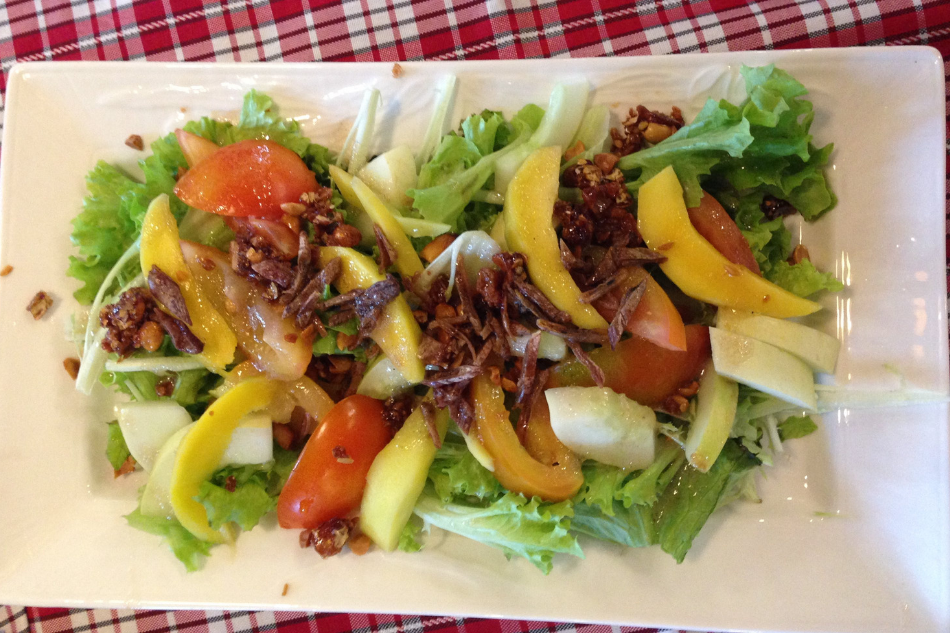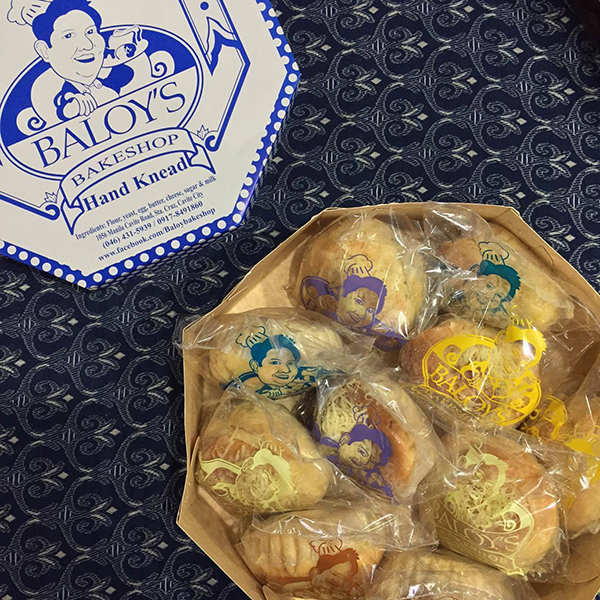How to eat your way through Cavite, birthplace of Philippine independence | ABS-CBN

Welcome, Kapamilya! We use cookies to improve your browsing experience. Continuing to use this site means you agree to our use of cookies. Tell me more!
How to eat your way through Cavite, birthplace of Philippine independence
How to eat your way through Cavite, birthplace of Philippine independence
Troy Barrios
Published Jun 12, 2019 11:44 AM PHT
|
Updated Jun 13, 2019 05:36 PM PHT
More famous for its heroes than its cooks, Cavite is a province whose cuisine encompasses the stretch from coast to mountain, influenced by geography, politics and the down-to-earth character of the Caviteño who, on the day after fiesta, will sit down to eat paksiw na lechon with tuyong tunso—a pairing that keeps him in touch with his proletarian roots.
More famous for its heroes than its cooks, Cavite is a province whose cuisine encompasses the stretch from coast to mountain, influenced by geography, politics and the down-to-earth character of the Caviteño who, on the day after fiesta, will sit down to eat paksiw na lechon with tuyong tunso—a pairing that keeps him in touch with his proletarian roots.
Native Caviteño Ige Ramos designed the Cavitex Food Tour, a gastronomic journey that takes us through six cities to unveil Cavite’s culinary and historic treasures.
Native Caviteño Ige Ramos designed the Cavitex Food Tour, a gastronomic journey that takes us through six cities to unveil Cavite’s culinary and historic treasures.
You may also like:
You may also like:
Noveleta
Noveleta
Just 45 minutes from Manila, Noveleta is home to the 16 1/2-year-old Malen’s Restaurant, an iconic stop where you can get the Magdiwang Traditional Breakfast, named after the faction of the Katipunan that sided with Bonifacio against Aguinaldo. This is a typical farmer’s breakfast, with ingredients sourced from local fields and rivers: tinapang Salinas made from tunsoy, elongated pan de troso, tamales, quesillo, Imus longanisa and sinangag washed down with steaming cups of kapeng Amadeo, hot tablea Alfonso or salabat.
Just 45 minutes from Manila, Noveleta is home to the 16 1/2-year-old Malen’s Restaurant, an iconic stop where you can get the Magdiwang Traditional Breakfast, named after the faction of the Katipunan that sided with Bonifacio against Aguinaldo. This is a typical farmer’s breakfast, with ingredients sourced from local fields and rivers: tinapang Salinas made from tunsoy, elongated pan de troso, tamales, quesillo, Imus longanisa and sinangag washed down with steaming cups of kapeng Amadeo, hot tablea Alfonso or salabat.
ADVERTISEMENT
Naic
Naic
This modest town is where the songwriter Cuenca grew up and Fr. Modesto de Castro wrote Urbana y Felisa. Later, the Acta de Naic was held here, a final attempt by Aguinaldo and Bonifacio to compromise. The rich farmlands of Naic grew rice, sugarcane and coconuts, which were so labor-intensive and heavily taxed by the Spanish that they were called “crops of oppression.” These are represented in three kakanin, traditional refreshment for farmers: alikaya, purple rice cake topped with latik; sinudsod, a galapong based “pancake” baked on a banana leaf, cut into strips and served with gata, a little sugar and cold coconut water; and muche, made with annatto, galapong and sweetened monggo paste.
This modest town is where the songwriter Cuenca grew up and Fr. Modesto de Castro wrote Urbana y Felisa. Later, the Acta de Naic was held here, a final attempt by Aguinaldo and Bonifacio to compromise. The rich farmlands of Naic grew rice, sugarcane and coconuts, which were so labor-intensive and heavily taxed by the Spanish that they were called “crops of oppression.” These are represented in three kakanin, traditional refreshment for farmers: alikaya, purple rice cake topped with latik; sinudsod, a galapong based “pancake” baked on a banana leaf, cut into strips and served with gata, a little sugar and cold coconut water; and muche, made with annatto, galapong and sweetened monggo paste.
Ternate
Ternate
From Naic we headed to the Kaybiang Tunnel along the Nasugbu-Ternate Road, a subterranean road tunnel dug under Mount Palay-Palay (a.k.a. Pico de Loro) to link Cavite and Batangas. At 300 meters long, the tunnel cuts travel time between the two provinces from four hours to one-and-a-half hours. Driving through Ternate brings us to this story: seven barangays of Ternate were set up by immigrants from the Moluccas who, it is said, fled from the Chinese pirate Limahong. They brought with them the language Chabacano, which spread as far as Zamboanga when men were taken from Ternate to work on Fort del Pilar.
From Naic we headed to the Kaybiang Tunnel along the Nasugbu-Ternate Road, a subterranean road tunnel dug under Mount Palay-Palay (a.k.a. Pico de Loro) to link Cavite and Batangas. At 300 meters long, the tunnel cuts travel time between the two provinces from four hours to one-and-a-half hours. Driving through Ternate brings us to this story: seven barangays of Ternate were set up by immigrants from the Moluccas who, it is said, fled from the Chinese pirate Limahong. They brought with them the language Chabacano, which spread as far as Zamboanga when men were taken from Ternate to work on Fort del Pilar.
Maragondon
Maragondon
Older than Naic, Maragondon is the first town established by the Jesuits in the 17th century. From its forests were taken wood for the ships used in the galleon trade. In 1618, Our Lady of the Assumption Church was built by the Jesuits and later taken over by the Augustinians. The magnificent old door still has a bas-relief of the galleons, acanthus plants and the garita (garrisons) that show the town’s relationship with the galleon trade. A few doors down is the house where Andres Bonifacio was tried and court martialed after the Tejeros Convention.
Older than Naic, Maragondon is the first town established by the Jesuits in the 17th century. From its forests were taken wood for the ships used in the galleon trade. In 1618, Our Lady of the Assumption Church was built by the Jesuits and later taken over by the Augustinians. The magnificent old door still has a bas-relief of the galleons, acanthus plants and the garita (garrisons) that show the town’s relationship with the galleon trade. A few doors down is the house where Andres Bonifacio was tried and court martialed after the Tejeros Convention.
Days after his conviction, he was secretly carried to nearby Mount Buntis where he was executed. The trial house was restored in 1996 and is now a full-fledged museum under the National Historical Commission.
Days after his conviction, he was secretly carried to nearby Mount Buntis where he was executed. The trial house was restored in 1996 and is now a full-fledged museum under the National Historical Commission.
Tanza
Tanza
Under the agrarian reforms by Governor William Howard Taft, Tanza’s middle class rose to become gentlemen farmers and businessmen. A typical family, the Tahimics, made their fortune in the early 19th century and built their ancestral home in the 1920s. Millie Tahimic transformed the kamalig into the restaurant, Calle Real, where she serves her version of Caviteño specialties made with ingredients sourced within the neighborhood, including a dried pusit salad with tamarind vinaigrette, paella negra, pork binagoongan and calandracas, a dish traditionally served during a wake, taking its name from the word calandra or coffin.
Under the agrarian reforms by Governor William Howard Taft, Tanza’s middle class rose to become gentlemen farmers and businessmen. A typical family, the Tahimics, made their fortune in the early 19th century and built their ancestral home in the 1920s. Millie Tahimic transformed the kamalig into the restaurant, Calle Real, where she serves her version of Caviteño specialties made with ingredients sourced within the neighborhood, including a dried pusit salad with tamarind vinaigrette, paella negra, pork binagoongan and calandracas, a dish traditionally served during a wake, taking its name from the word calandra or coffin.
Kawit
Kawit
The last stop was the Aguinaldo Shrine in Kawit where a merienda cena was spread with Cavites delicacies: pancit choko en su tinta and halo halo from Asiong’s; ensaimada de Cavite from Baloy’s Bakeshop; bibingka samala from Pat & Sam; and bibingkang balinghoy from Aling Baby Clemente.
The last stop was the Aguinaldo Shrine in Kawit where a merienda cena was spread with Cavites delicacies: pancit choko en su tinta and halo halo from Asiong’s; ensaimada de Cavite from Baloy’s Bakeshop; bibingka samala from Pat & Sam; and bibingkang balinghoy from Aling Baby Clemente.
WHERE TO EAT
WHERE TO EAT
Baloy’s Bakeshop (for ensaimada de cavite)
1056 Manila-Cavite Road, Santa Cruz, Cavite
(0917) 849-1860
Calle Real Restaurant
Santa Cruz Street, Tanza, Cavite,
(046) 418-1574, (0917) 628-1692, (0922) 883-9532
Malen’s Restaurant
9025 Magdiwang Highway, Noveleta, Cavite,
(046) 438-5027, 438-1634, Malensphilippines. Wordpress.Com
Pat & Sam (for bibingka samala )
506 Padre Pio Street, Caridad, Cavite
(046) 431-2356
Traditional Kakanin (for alikaya, sinudsod and muche) order from Julia Manalo
(046) 856-1011
The Manila-Cavite Expressway, a.k.a. CaviteX, is a 14-kilometer stretch that links Manila to the southern province of Cavite, making it easily accessible. Sponsored by the CaviteX Board, the CaviteX Food and Culture Tour was created by Ige Ramos, a book writer, food writer and staunch cultural worker promoting the food and cuisine of Cavite. For information about the Cavite Culinary and Heritage Tours, email EatYourHistory@ FoodHolidays.com
Photographs by Troy Barrios
Photos of the traditional breakfast kakanin and ensaimada de Cavite by Alexis Deocaris of ForkSpoonManila
Photos of the traditional breakfast kakanin and ensaimada de Cavite by Alexis Deocaris of ForkSpoonManila
ADVERTISEMENT
ADVERTISEMENT








